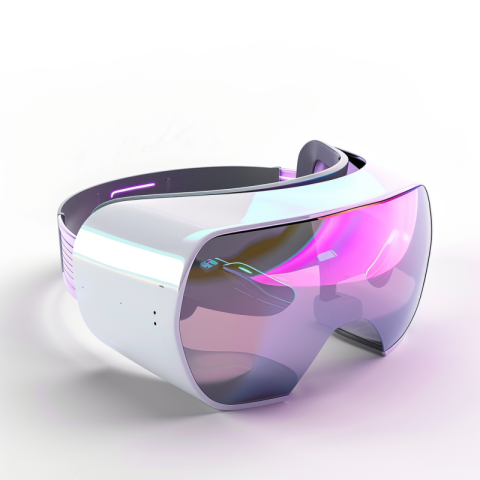











Virtual Reality: The Ultimate Guide to VR Headsets, Experiences & the Future
Virtual Reality (VR) technology has rapidly evolved from a futuristic concept to a tangible and immersive experience accessible to a wide audience. VR headsets transport users to computer-generated worlds, offering a sense of presence and interaction that was once unimaginable. This guide will delve into the realm of VR, exploring its various aspects, including headsets, applications, and the future of this transformative technology.
What is Virtual Reality (VR)?
Virtual Reality is a computer-generated simulation of a three-dimensional environment that can be interacted with in 1 a seemingly real or physical way by a person using special electronic equipment, such as a helmet with a screen inside or gloves fitted with 2 sensors. It aims to create a sense of presence, making the user feel like they are truly inside the virtual world.
Key Components of a VR System:
- VR Headset: The primary device, a head-mounted display that provides stereoscopic visuals and tracks the user's head movements.
- Controllers: Handheld devices that allow users to interact with the virtual environment.
- Tracking System: Sensors that track the user's movements and translate them into the virtual world.
- Computer or Console: Provides the processing power to run VR experiences.
Types of VR Headsets:
-
Tethered VR Headsets:
- Connect to a powerful PC or console via cables.
- Offer the highest fidelity visuals and most immersive experiences.
- Examples: Valve Index, HTC Vive Cosmos, HP Reverb G2
-
Standalone VR Headsets:
- Self-contained devices that don't require a PC or console.
- Offer greater freedom of movement but may have less processing power than tethered headsets.
- Examples: Meta Quest 2 (formerly Oculus Quest 2), HTC Vive Focus 3
-
Mobile VR Headsets:
- Use a smartphone as the display and processing unit.
- More affordable but offer a less immersive experience.
- Examples: Samsung Gear VR, Google Daydream View (both discontinued)
Key Features to Consider in a VR Headset:
- Resolution: Higher resolution displays offer sharper and more detailed visuals.
- Field of View (FOV): A wider FOV creates a more immersive experience by encompassing more of the user's peripheral vision.
- Refresh Rate: A higher refresh rate (e.g., 90Hz, 120Hz, 144Hz) reduces motion blur and provides a smoother experience.
- Tracking Accuracy: Precise tracking ensures that the user's movements are accurately reflected in the virtual world.
- Comfort: Consider the weight, weight distribution, and padding of the headset for long-term comfort.
- Controller Design: Ergonomic controllers with intuitive button layouts enhance the user experience.
- Audio: Integrated headphones or spatial audio capabilities contribute to immersion.
Applications of Virtual Reality:
- Gaming: The most popular application of VR, offering immersive and interactive gaming experiences.
- Entertainment: Watching movies, attending virtual concerts, and exploring virtual environments.
- Education and Training: VR can be used to create realistic simulations for training in various fields, such as medicine, aviation, and engineering.
- Virtual Tourism: Exploring destinations around the world from the comfort of your home.
- Social VR: Interacting with other users in virtual spaces.
- Design and Prototyping: VR can be used to visualize and interact with 3D models before they are physically built.
- Therapy and Rehabilitation: VR is being used to treat phobias, anxiety disorders, and PTSD, as well as for physical rehabilitation.
Top VR Headset Brands:
- Meta (formerly Oculus): A leading manufacturer of VR headsets, known for the Meta Quest 2.
- HTC Vive: Offers a range of high-end VR headsets, including the Vive Cosmos and Vive Focus 3.
- Valve: Known for the Valve Index, a high-fidelity VR headset with advanced controllers.
- HP: Manufacturer of the HP Reverb G2, a high-resolution VR headset.
- Sony: Creator of the PlayStation VR headset, designed for use with the PlayStation 4 and 5.
How to Choose the Right VR Headset:
- Budget: VR headsets range in price from a few hundred dollars to over $1000.
- Use Case: Consider what you will primarily use the headset for (gaming, entertainment, etc.).
- PC/Console Compatibility: If choosing a tethered headset, ensure it's compatible with your PC or console.
- Space Requirements: Some VR systems require more space than others.
- Comfort: Read reviews and try on headsets if possible to assess comfort.
The Future of Virtual Reality:
VR technology is constantly evolving. We can expect to see:
- Higher Resolution Displays: Sharper and more realistic visuals.
- Wider Field of View: Even more immersive experiences.
- Improved Tracking: More accurate and responsive tracking systems.
- Wireless Technology: Untethered VR experiences with greater freedom of movement.
- Haptic Feedback: More realistic tactile sensations.
- Eye Tracking: Enhanced realism and interaction possibilities.
- Augmented Reality (AR) Integration: Blending virtual elements with the real world.
Conclusion:
Virtual Reality is a transformative technology that offers immersive and interactive experiences across a wide range of applications. By carefully considering your needs and researching different VR headsets, you can find the perfect system to transport you to new and exciting virtual worlds. The future of VR promises even more realistic and engaging experiences, further blurring the lines between the physical and digital realms.
best VR headset 2024, best VR headset for PC gaming, best standalone VR headset, Oculus Quest 2 vs HTC Vive Focus 3, VR headset with best resolution, affordable VR headset for beginners, VR for gaming and entertainment, future of virtual reality, VR applications in education and training, VR headset comparisons and reviews

